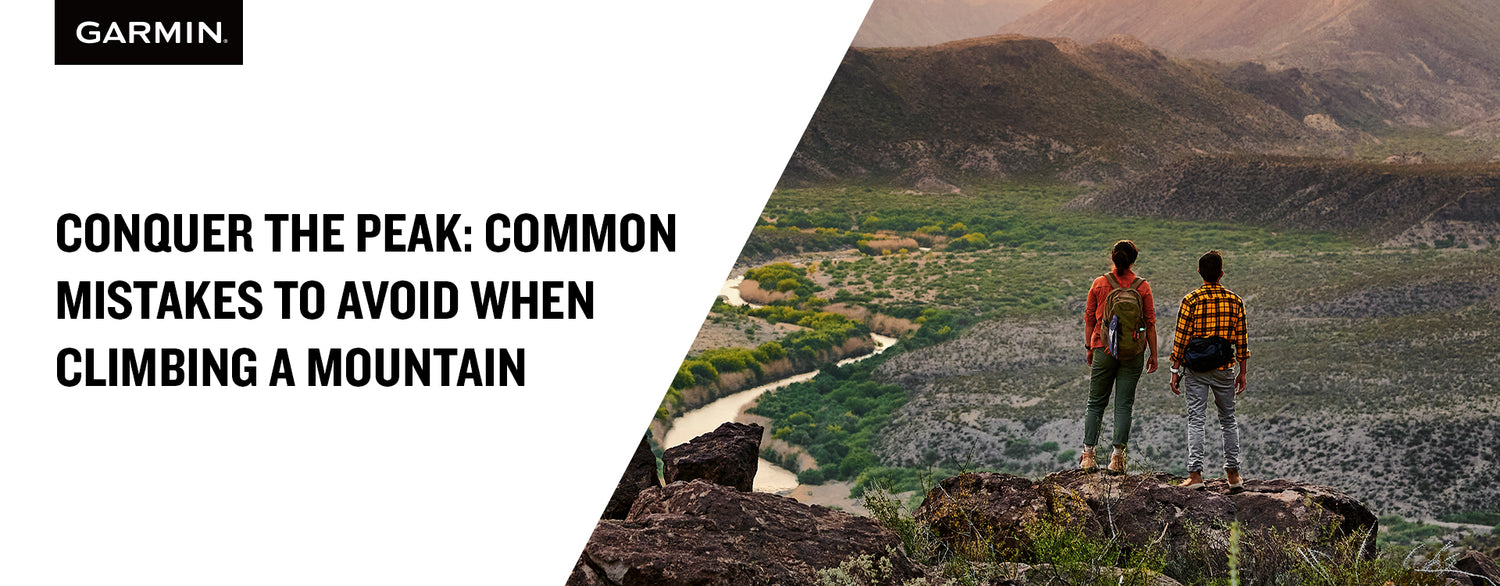Mountain climbing is an exhilarating and challenging activity that attracts adventure enthusiasts from all over the world. The thrill of conquering a peak, the stunning views from the top, and the sense of accomplishment that comes with scaling a mountain are just three of the many reasons adventurers seek this hobby.
However, climbing a mountain is not an easy feat, and there are many challenges and risks associated with it. Even if you're already a seasoned climber, there are common mistakes that you need to avoid to ensure a safe and successful climb.
In this blog post, we will discuss some of the most common errors that climbers make while climbing a mountain and provide you with tips on how to avoid them. So let's get to it so you can start conquering the peak right away!
Underestimating the difficulty
Misjudging the difficulties of the climb is one of the most repeated mistakes of climbers. Many assume that they have the necessary skills and experience to conquer any mountain, only to find themselves struggling to keep up with the climb.
This usually leads to exhaustion, dehydration, or injury, as they push themselves too hard without adequate rest or nutrition. In some cases, a climb can even lead to death, as climbers get caught in dangerous weather conditions or become too fatigued to continue.
To avoid this, it is essential to do some research and assess your abilities before attempting any climb. This means understanding the difficulty level of the climb, the terrain, and the weather conditions, as well as having the necessary equipment and training to handle any challenges that may arise. By taking these factors into consideration, you can ensure a safe and successful journey to the top.
Ignoring warning signs

When climbing a mountain, it's important to remember that weather conditions and other factors can change quickly, even if you have carefully planned your climb. It's crucial to pay attention to any warning signs, such as changes in wind speed or sudden drops in temperature, and adjust your plan accordingly. By staying alert and responsive to changing conditions, you can ensure a safe and successful climb, even in the most challenging environments.
Not staying hydrated
Climbing a mountain can be physically demanding, and it's essential to stay hydrated to avoid dehydration and other health problems. When climbing at high altitudes, the body loses more fluids through sweating and respiration, which is why it is a must to drink enough water to maintain a healthy balance.
Dehydration can cause symptoms such as headaches, dizziness, fatigue, and confusion, which can quickly become a danger especially when you’re on a faraway mountain. It is recommended to drink at least 2 to 3 liters of water per day while climbing, and more if the weather is hot.
It's also important to drink fluids that contain electrolytes, such as sports drinks or electrolyte tablets, to replace the minerals lost through sweat. By staying hydrated, you can maintain your physical and mental well-being, reduce the risk of developing health problems, and improve your chances of reaching the summit safely.
Going alone

Climbing alone is never recommended. Having a partner can significantly increase safety and provide additional support. When climbing with a partner, you have someone to share the workload, assist with navigation, and help in case of an emergency.
In case of an accident or injury, a partner can provide critical first aid and assist in getting help. While climbing alone may seem like a more independent and self-reliant approach, it significantly increases the risk of accidents and should be avoided whenever possible. By climbing with a partner, you can enhance your safety, enjoy the climb, and ensure that someone has your back every step of the way.
Failing to prepare adequately

Preparing for a climb is essential to ensure a safe and successful ascent. This means training physically and acquiring the necessary gear. Physical training should include activities such as hiking, running, or weightlifting to build endurance, strength, and flexibility. It's also important to acclimate to high altitudes by gradually increasing the altitude and duration of your training.
Acquiring the necessary gear involves researching and investing in high-quality equipment, such as climbing shoes, harnesses, helmets, ropes, protection gear, and a reliable smartwatch to ensure your safety and comfort while climbing.
The Instinct 2s is an essential tool for climbers, as it provides valuable information such as altitude, barometric pressure, temperature, and weather alerts, which can help in reaching the top of the mountain. This smartwatch is equipped with GPS technology, which can be used to track your progress and ensure that you stay on the right path. The Instinct 2s is also designed to withstand harsh outdoor environments, making it a trustworthy and durable tool for climbers.

This smartwatch also helps you stay on top of changing weather conditions, which is critical for safety and provides alerts for approaching storms or other hazardous conditions. Additionally, it monitors your heart rate, stress levels, and sleep patterns, which can help you optimize your performance and adjust your climbing strategy accordingly. By using the Instinct 2s as a climbing gear, you can stay informed and focused and maximize your chances of reaching the summit safely and successfully.
So why not take your climbing game to the next level and bring the Instinct 2s with you? Gear up, set your sights on the peak, and let the Instinct 2s guide you to conquer new heights and make unforgettable memories.





Leave a comment
All comments are moderated before being published.
This site is protected by reCAPTCHA and the Google Privacy Policy and Terms of Service apply.